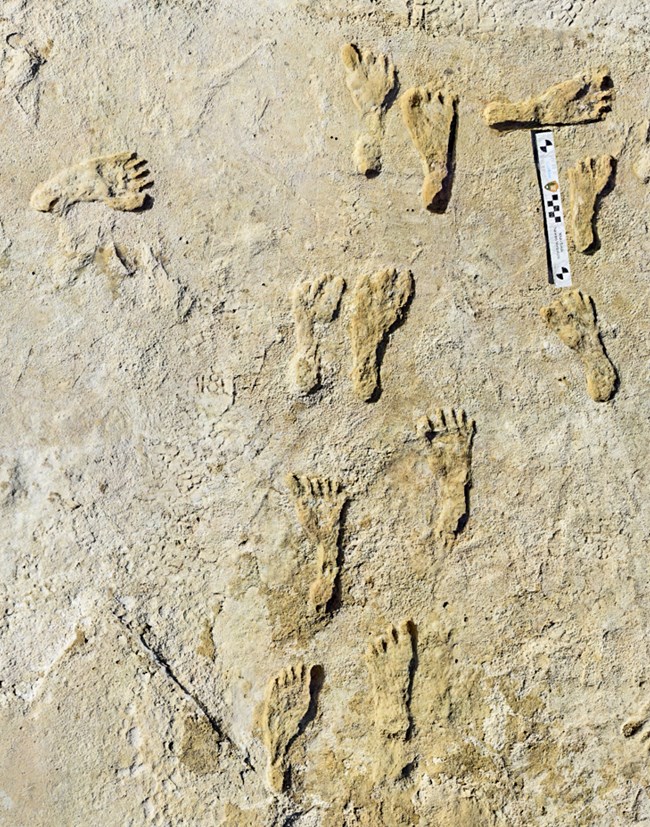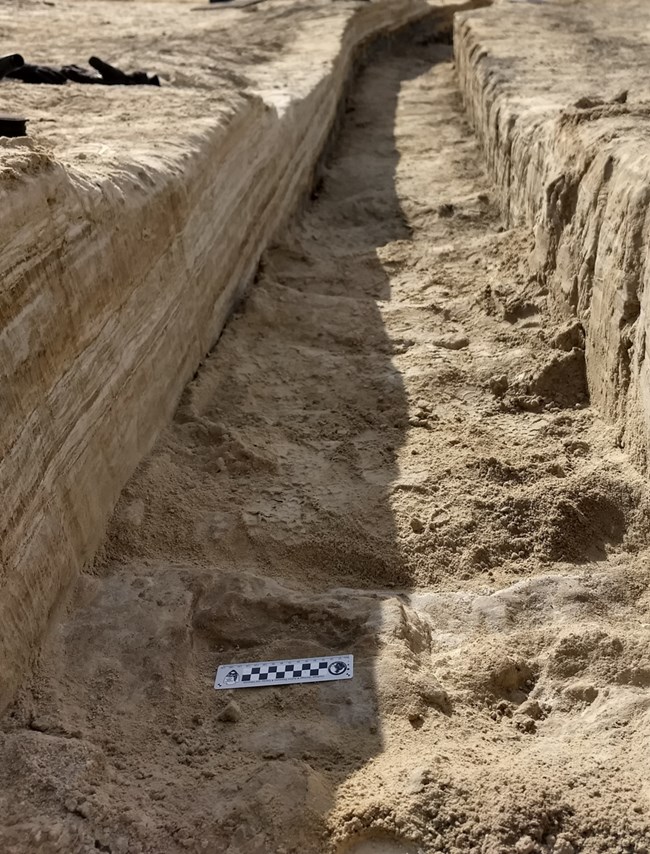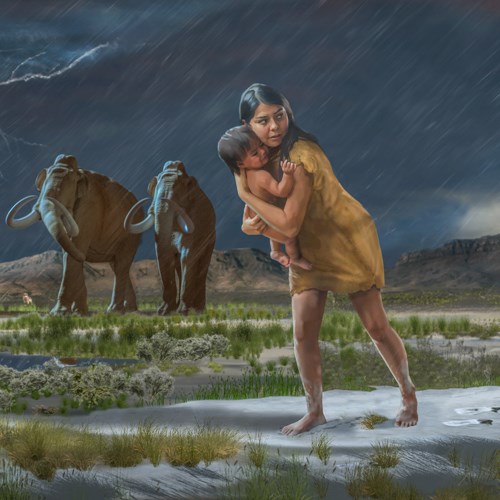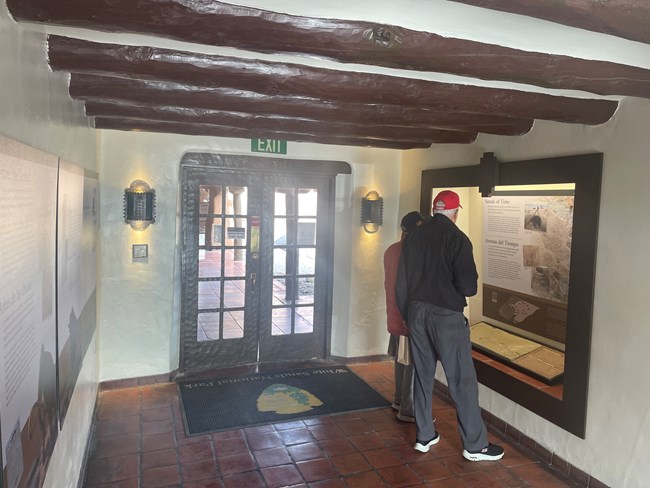
NPS Photo 
NPS Photo Every day, people from all over the world visit White Sands National Park and leave traces of their adventures. The white dunes of the Tularosa Basin are just a recent occurrence on the geological timeline. At White Sands, we find many remarkable fossilized footprints scattered across Lake Otero. While these footprints are ancient, scientists are still uncovering new evidence of past life. 
© Davide Bonadonna and Bournemouth University 
NPS Photo In 2018, researchers discovered what they believe to be footprints of a female. They tell a story that may seem familiar today; her footprints show her walking for almost a mile, with a toddler’s footprints occasionally showing up beside hers. Evidence suggests that she carried the child, shifting them from side to side and occasionally setting the child down as they walked. The footprints broadened and slipped in the mud as a result of the additional weight she was carrying. Based on stature and walking speed, it appears that most of the footprints in this study come from teenagers and children. As reported in the journal Science, “One hypothesis for this is the division of labor, in which adults are involved in skilled tasks whereas 'fetching and carrying' are delegated to teenagers. Children accompany the teenagers, and collectively they leave a higher number footprints that are preferentially recorded in the fossil record. This pattern is common to all excavated surfaces.” (Bennett, 2021) 
Karen Carr 
Courtesy of Karen Carr Although the reason for the disappearance of the great animals of the ice age is still debated, most theories do agree that climate change had a major influence. Environments once rich in lush green life began to disappear as those regions began experience less rainfall and higher temperatures. The fossilized footprints of White Sands are probably the most important resources in the Americas to understand the interaction of humans and extinct animals from the ice age. These fossilized footprints, among other natural and cultural features found in the dunefield, further propelled the movement to re-designate White Sands National Monument into White Sands National Park. As a massive landscape filled with history, White Sands continually proves to be more than just a sandbox. Dig Deeper: What animals made these tracks? 
NPS Photo 
NPS Photo, Patrick Kark The park is continually working on ways to help visitors experience these incredible resources. One of these ways is updating broll footage and releasing images for the public as this story continues to evolve. These resources can be found below A new exhibit was installed at the visitor center in January of 2024 with more information and casted human footprints for visitors to enjoy and learn more about these trackways. |
Last updated: September 24, 2024
